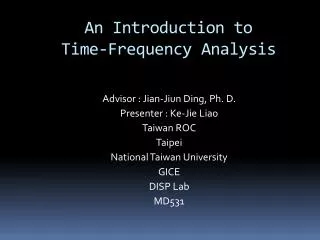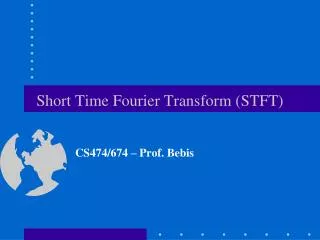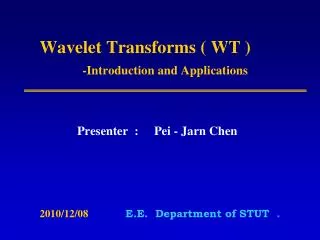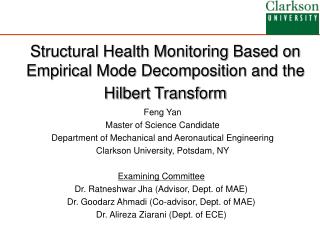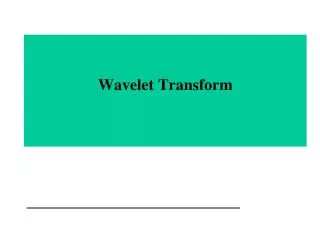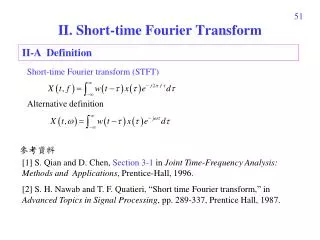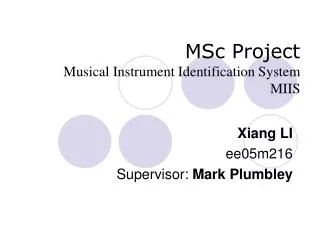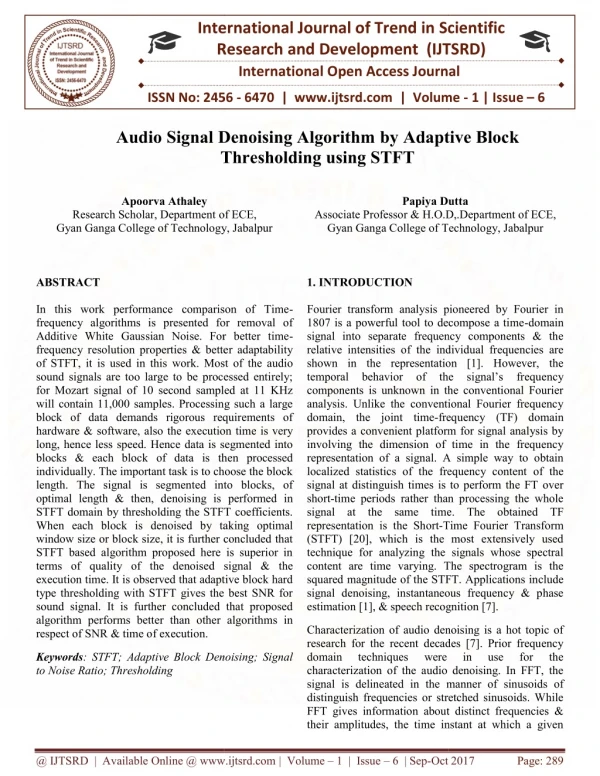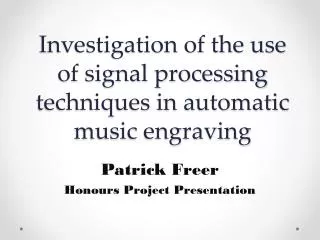Audio Signal Denoising Algorithm by Adaptive Block Thresholding using STFT
In this work performance comparison of Time frequency algorithms is presented for removal of Additive White Gaussian Noise. For better time frequency resolution properties and better adaptability of STFT, it is used in this work. Most of the audio sound signals are too large to be processed entirely for Mozart signal of 10 second sampled at 11 KHz will contain 11,000 samples. Processing such a large block of data demands rigorous requirements of hardware and software, also the execution time is very long, hence less speed. Hence data is segmented into blocks and each block of data is then processed individually. The important task is to choose the block length. The signal is segmented into blocks, of optimal length and then, denoising is performed in STFT domain by thresholding the STFT coefficients. When each block is denoised by taking optimal window size or block size, it is further concluded that STFT based algorithm proposed here is superior in terms of quality of the denoised signal and the execution time. It is observed that adaptive block hard type thresholding with STFT gives the best SNR for sound signal. It is further concluded that proposed algorithm performs better than other algorithms in respect of SNR and time of execution. Apoorva Athaley | Papiya Dutta "Audio Signal Denoising Algorithm by Adaptive Block Thresholding using STFT" Published in International Journal of Trend in Scientific Research and Development (ijtsrd), ISSN: 2456-6470, Volume-1 | Issue-6 , October 2017, URL: https://www.ijtsrd.com/papers/ijtsrd2512.pdf Paper URL: http://www.ijtsrd.com/engineering/electronics-and-communication-engineering/2512/audio-signal-denoising-algorithm-by-adaptive-block-thresholding-using-stft/apoorva-athaley
★
★
★
★
★
136 views • 12 slides


